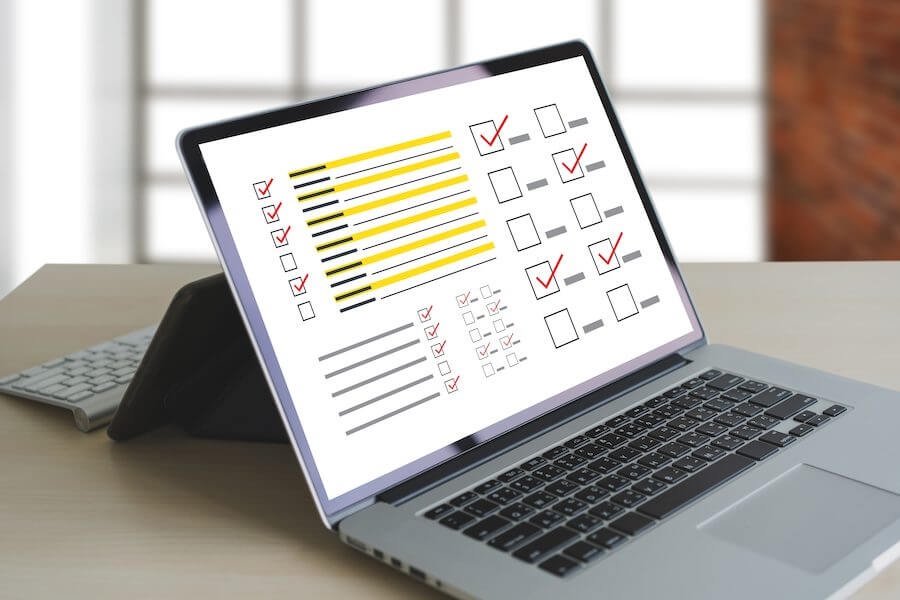As an entrepreneur, the line between success and failure majorly lies in how efficiently your business operates. If you want your business to succeed in whichever environment, you need to conduct regular analysis of your business operation processes to ensure they are as efficient as possible. Usually, there are several ways that you can use to establish your business efficiency. One of the most effective and reliable methods is conducting a SWOT Analysis. In this article, we shall discuss comprehensively about the tips and techniques of a SWOT analysis along with free SWOT analysis templates that can help.
What is SWOT Analysis?
A SWOT Analysis is an acronym that stands for Strength, Weakness, Opportunities, and Threats facing an organization. In its broadest terms, it refers to a strategic planning tool that an organization uses to assess its current position. Through SWOT Analysis, the organization will, therefore, be able to identify some of the factors affecting its normal operation and develop new strategies to improve those weaknesses.
Also, a SWOT Analysis helps entrepreneurs identify where they are doing well, what’s not doing well, where they want to be, and how to get there. According to studies, conducting such an analysis not only makes you get the most of what you have but also reduces your chances of failure. Better still, a well-conducted analysis can help you identify a potential hazard that would otherwise catch up with your business unaware.
SWOT Analysis Templates
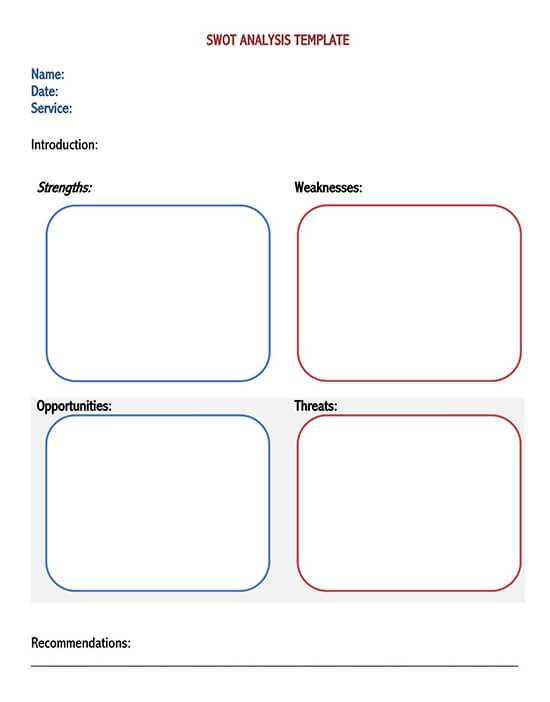
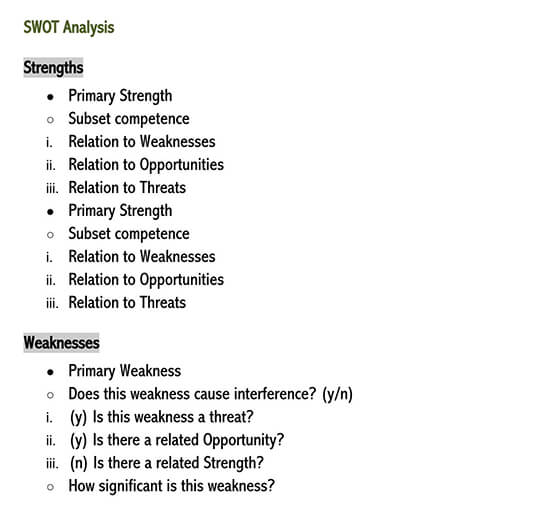

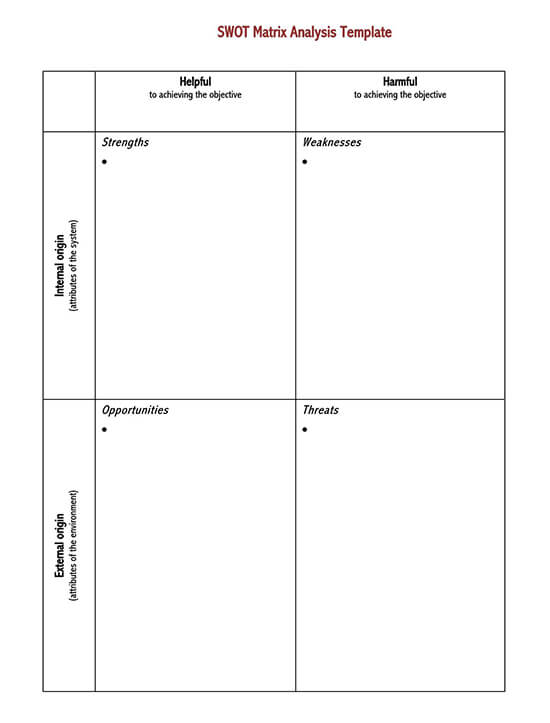
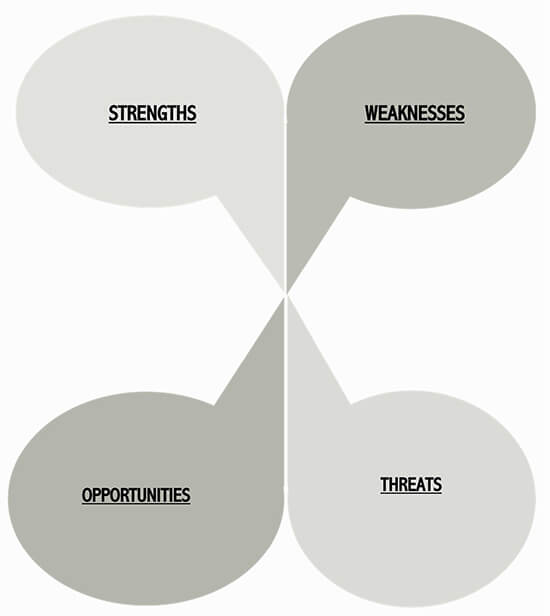
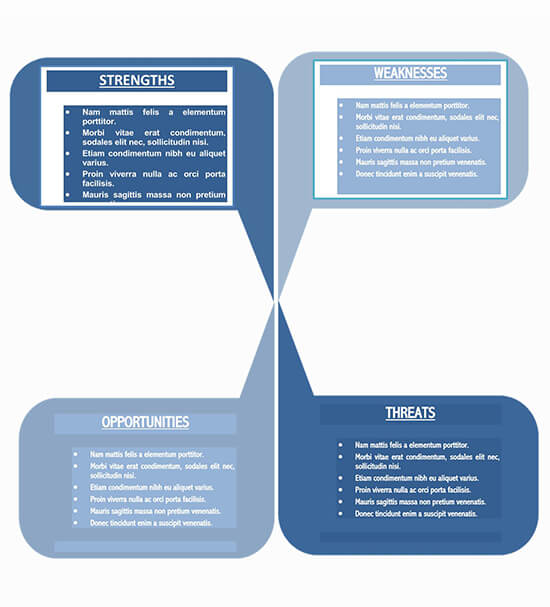
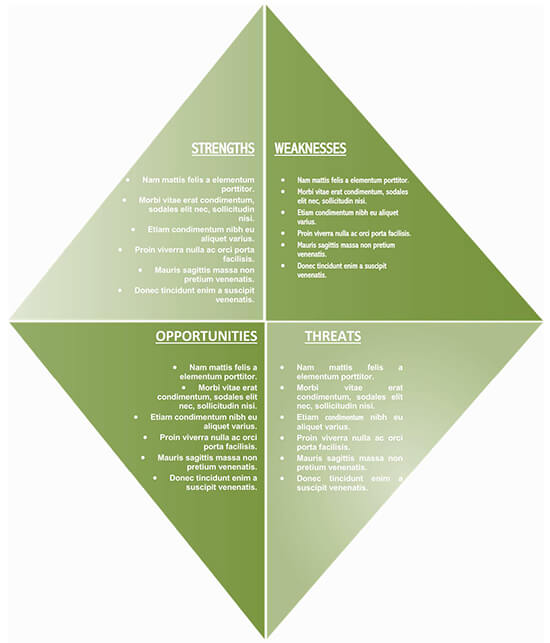
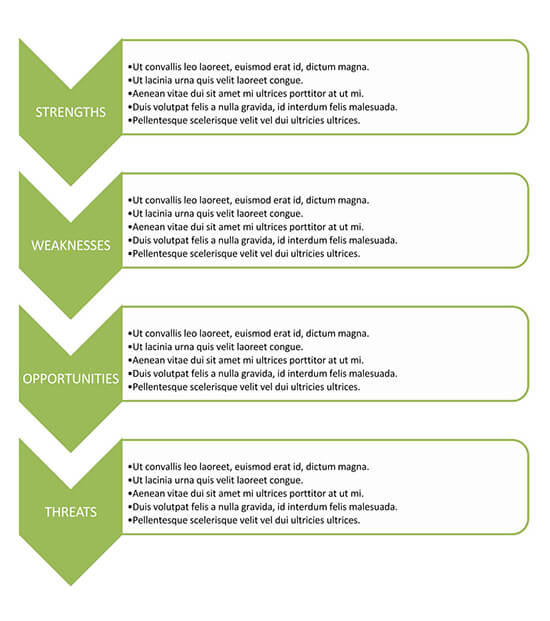
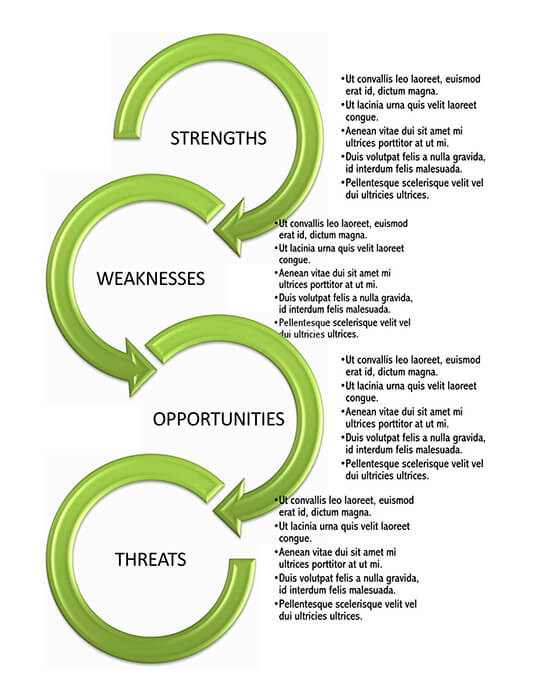
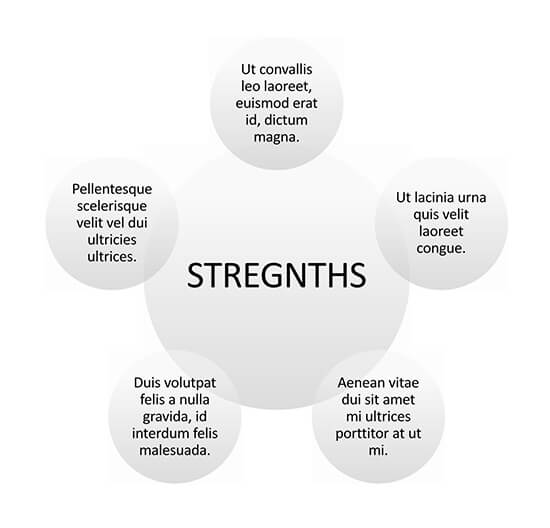
How to do a SWOT Analysis
We now know that SWOT stands for Strength, Weakness, Opportunity, and Threat. But do we know how to conduct the actual analysis? Well, you can go ahead and download our free matrix templates for more straightforward illustrations.
Once you have the four grid matrix in place, you can gather a team of high-level management staff to kick off the brainstorming process. Here, you should aim at bringing out ideas and opinions about the current position of your organization. Each time you identify strength, weakness, opportunity, or threat, you should not use it down in the relevant grids in your matrix.
Strengths
Strengths should be the first element in your SWOT Analysis grid. It involves everything that your organization excels on perfectly and can distinguish it from its competitors. For instance, it may be the deployment of unique technology, reliable and loyal customer base, strong brand, and effective customer care services, among others. Also, think of what makes your organization run, what are the core values, ambitions motivations, access to the materials manufacturing process, and the list are endless.
Weakness
After listing down your strengths, you now need to turn that critical awareness of your weaknesses. Think of that thing holding down your business or project? Take a look around and identify anything that is preventing your business from reaching its optimum level. These may include weak brand, higher than normal employee turnover, insufficient supply chain, inadequate capital, or high debt levels, to mention a few.
Opportunities
Opportunities refer to chances or openings that, if considered, can give your organization some competitive advantage. Usually, the opportunities are found outside the organization, i.e., external factors. Therefore, while you think of various opportunities around you, also think of the possible ways in which you could dramatically improve your customer base? Remember, if you identify a specific opportunity and take advantage of it, it can act as a game-changer by improving your company’s competitiveness. Last but not least, watch for any changes in the government policies and seek ways in which you can use it as a steppingstone. Alongside this, monitor population profiles, lifestyle changes, and social patterns. This information can greatly help you spot some opportunities.
Threats
Just like opportunities, threats also fall under the category of external factors, only that they don’t mean well for your business. Threats comprise of anything that can cause potential harm. A better example is extreme weather elements such as droughts, which have a devastating effect on crop-producing companies. Other examples include a shift in market patterns, shortages in supply chains, and government/regional policy changes, among others.
Example of a SWOT Analysis
| Strengths Our chosen location will attract visitors as well as street shoppers. We provide effective customer care services our lead consultants share a positive reputation within the market have low overheads. This makes us able to offer good values to our clients we strive to know our clients one by one. | Weaknesses We have a limited market presence and we have a small staff as compared to our competitors our monthly cash flow is unreliable. |
| Opportunities The local government announced favorable policies to support local businesses. Our competitors are slow in adopting new technologies. There is a new institution being built locally. This will bring along a huge number of customers. | Threats The regional policies implemented may limit the development of our external market of technology by our competitors may affect our competitive advantageous competitor offers the same products as ours. |
Who Conduct a SWOT Analysis?
For a SWOT Analysis to be effective, it should always be a collaborative and inclusive process that involves critical stakeholders within an organization. These stakeholders should comprise project managers, a team of members, and other essential individuals that play a part in the organization’s decision-making process. Oftentimes, the more you include many stakeholders, the better the chances of getting satisfactory information. Make sure you engage such thoughtful meetings in a more relaxed and friendly environment.
When do you use SWOT?
You can use a SWOT when:
- Exploring various possibilities, efforts or solutions in an organization
- Making decisions on the best strategies for your initiative. For instance, you might be presented with numerous strategies; hence you can use SWOT analysis to select the best out of the best.
- Determining whether or not a change is necessary within your organization/business.
- Modifying or refining your existing plans in the mid-course. Perhaps a new opportunity has manifested, and you feel it’s a better alternative to your existing plans.
Final takeaway
A SWOT analysis provides a guide towards achieving organizations’ goals and success. It brings various stakeholders and managers to a table to discuss various ideas that would benefit an organization. Through this, a SWOT analysis helps identify various challenges that would otherwise prevent the organization from reaching its set goals.
Additionally, through the process of brainstorming, a SWOT analysis helps come up with strategies that could help avert the obstacles within the company’s path to success. Therefore, as an entrepreneur wishing to achieve some success at some point, it’s always recommended that you conduct a SWOT analysis for your business.







